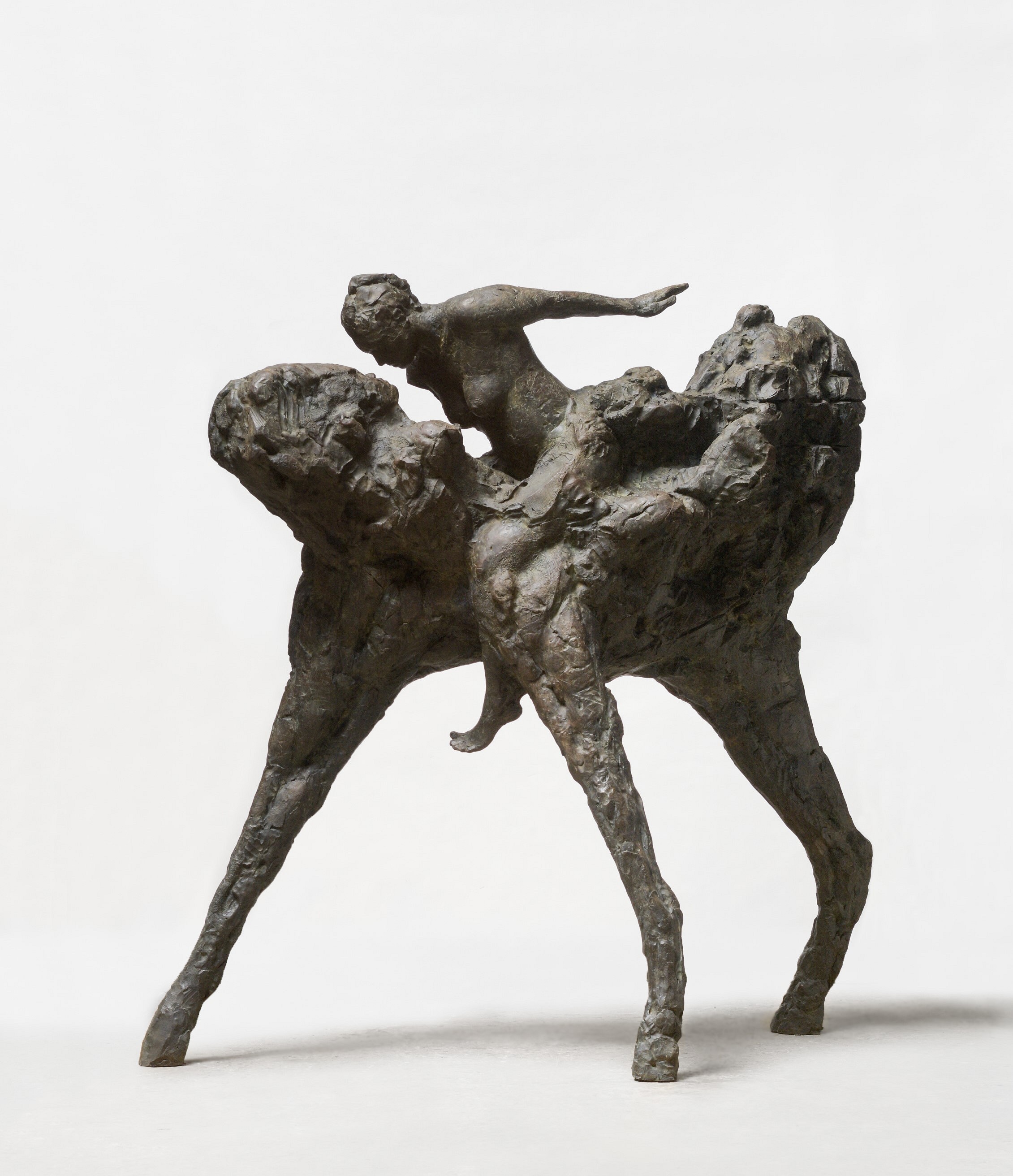PRESS RELEASE

CHTHONIOS by Dylan Lewis
Feb 19 – Mar 12, 2020
A SELECTION OF WORKS FROM DYLAN LEWIS’ NEW EXHIBITION CHTHONIOS
DYLAN LEWIS | CHTHONIOS | From the Greek [ khthon, ‘ground, earth’] + [-ios, ‘of’ ]
06 – 29 FEBRUARY Everard Read Cape Town
17 FEBRUARY- 12 MARCH Everard Read Franschhoek
Emerging out of a seven-year period of inspired productivity and emotional turbulence, CHTHONIOS finds sculptor Dylan Lewis in an extended moment of introspection and reckoning. The artist’s present preoccupation sees him grappling with the emotional tensions and complexities of human relationships, while striving towards reconnection with his sense of self. This journey has brought Lewis down a number of avenues, which converge on the current exhibition as a whole.
Venturing between visceral abstraction, frank eroticism, bold exuberance, wholesale embracing of the human figure, and a move away from the fragmentary and the isolated, Lewis has imbued this new exhibition with a markedly different energy and confidence than earlier work. CHTHONIOS finds him returning to the themes that defined his earlier sculptures, albeit in a fresh and assured new guise.
In CHTHONIOS Lewis utilises ideas of nature and wildness to reflect on the often-painful process of self-actualisation. Inspired by writers such as Joseph Campbell, Jay Griffiths and Robert Bly, this body of work channels the agony and ecstasy of the chthonic: a Jungian concept of the darker underbelly of the psyche, which must be confronted and consolidated if one is to achieve a true sense of self. The term derives from the Greek khthonios.
While not a direct quotation by any means, the landslide of human forms in many of Lewis’s ‘CHTHONIOS’ sculptures seem to recall the histrionic quality of Auguste Rodin’s monumental magnum opus The Gates of Hell. Lewis’s swirling vortex of bodies – unquestionably one of the most striking pieces of work the artist has ever produced – speaks to the painful struggle of individuation and the battle of relating to others in a shared space of irreconcilability and schism.
Lewis, like Rodin before him, is drawn to this symbolism because of the evocative imagery rather than any religious allegory; his work eschews any notion of Divine Judgement. Instead, Lewis asserts that these structures of meaning are human constructs; while often beautiful they can also be devastating in seeking to deny the full spectrum of human complexity. Lewis’s new monumental animalistic sculptures – where male and female figures appear to emerge from a trio of muscular animal limbs – serve to emphasise the balancing act of the three psychic agents (ego, id, and superego) in order to move beyond the constricting grip of repressed traumas into the freedom of unconscious instinctual energies.
This dynamic is further explored in another new series, where conventionally academic busts are juxtaposed with the swarming mass of conflicting passions that flow from within them. Mirroring a metaphorical search for the ‘wild twin’, the wall-mounted relief works of the Spoor series are a direct engagement with the automatic unconscious, a vessel for raw, unfiltered emotion and a testament to corporal experience. Leaping between the realms of painting, sculpture, and printmaking, these works are inspired by Dylan Lewis’s encounters with spoor in nature: traces of animal tracks, scents and broken foliage which indicates the presence of an animal in a particular area.
Ultimately, the journey of reconnecting with what has been lost is the overarching theme that runs through all of the CHTHONIOS artworks. The raw physicality in Lewis’s sculptural reveries is very much a part of that, as are the figures fraught in existential and introspective conflicts. Following three decades of artistic practice – including countless shows, a sculpture garden, and three solo exhibitions at Christie’s – the sculptures, busts and reliefs that make up CHTHONIOS may well represent the first time that Dylan Lewis truly feels at home in his voice.
– Tim Leibbrandt



